Social Signals
What Is Paid Media: Types & Examples
Paid media is often treated like a checklist item in a marketing plan: launch a few search ads, run a Meta campaign, maybe test YouTube if there’s budget left.
But not all paid media is created equal, and treating every channel the same is a fast way to burn through budget with little to show for it.
Whether you’re working in-house or managing campaigns for clients, understanding the different types of paid media (and what each one is actually good for) can help you prioritize the right tactics, set realistic expectations, and answer the dreaded question: “What are we getting out of this?”
This article breaks down the main types of paid media with real-world examples so you can make smarter decisions about where to spend your money.
What Is Paid Media?
Paid media is any type of marketing where you pay to get in front of your audience. That includes things like search ads, social ads, display banners, video pre-roll, and even influencer sponsorships.
While paid media is often used interchangeably with the term cost-per-click (CPC), it’s important to note the differentiation.
It’s the part of your marketing strategy that gives you scale and control. You’re not waiting for someone to discover your blog post or share your Instagram reel organically.
You’re putting money behind your message to drive attention right now.
Paid media works best when it’s tied to a clear goal, like driving leads, sales, or downloads. Without a strategy, it’s just noise with a price tag.
The Difference Between Earned, Owned, And Paid Media
Think of paid, owned, and earned media as different ways to get your message out. You need a mix of all three, but each serves a different purpose.
- Paid media is when you pay for attention. Think of tactics like search ads, social ads, sponsored posts, affiliate placements, etc.
- Owned media is what you control. Think of assets like your website, blog, email list, and social channels.
- Earned media is what others say about you. This often comes in the form of reviews, PR coverage, social shares, and more.
Some examples of earned media include:
- Social sharing from customers.
- Customer reviews.
- External media coverage (public relations).
Owned media examples include:
The overlap matters, too. A paid campaign might drive traffic to a landing page (owned media), which then gets shared by a happy customer (earned media). When these channels work together, your efforts go further.
Types Of Paid Media Channels
Now that we’ve identified the definition of paid media, let’s take a look at the different types of paid media channels and the purposes they serve.
Before we dive into the different paid media channels, it’s also important to note the difference between ad formats and ad channels.
Ad formats are the type of ads shown in a particular channel. An ad format example could be:
So, while ad formats are important and will depend on the channel, below we will focus on the channels themselves.
There are other types of paid media channels available that are not listed here, such as more traditional methods like direct mail or billboards. These paid media channels have a more physical presence.
Here, we will focus on digital channels.
Paid Search
Paid search puts your ads at the top of search results for specific keywords. It’s often the first paid channel marketers try because it targets people already looking for what you offer.
Platforms like Google Ads and Microsoft Ads let you bid on search terms so your ad shows when someone types in something relevant.
Google is the leading search engine in market share, with its sites generating 60.4% of user searches in the United States.
It’s high-intent, measurable, and scalable. But, it’s also competitive, especially in industries like legal, finance, or ecommerce.
Success here depends on more than just bidding. Your landing page, ad copy, keyword match types, and conversion tracking all matter. You’re not just paying for clicks – you’re paying for the opportunity to convert interest into action.
Paid Social
Paid social platforms let you reach people based on who they are, not just what they search.
Many of the platforms offer detailed targeting based on demographics, interests, behaviors, and even job titles.
Some of the most common paid social platforms include:
- Meta (Facebook).
- Instagram.
- LinkedIn.
- TikTok.
- Pinterest.
- Snapchat.
- X (Twitter).
The most common ad format in social channels is placed within a user’s newsfeed as they scroll. These ads will either consist of one (or more) static images or a video as the main visual.
It’s not just about brand awareness. Many brands use social to drive signups, sales, or downloads. You can run video ads, carousels, static images, or Stories, depending on what fits your brand and goal.
Some paid social platforms are more beneficial for B2B companies than for B2C brands.
For example, LinkedIn advertising consists mainly of B2B brands marketing their product or service to other professionals.
Other platforms like TikTok and Snapchat may be better suited for B2C or ecommerce brands.
The tricky part? Creative fatigue is real.
If you’re not refreshing your assets often or testing different hooks, performance will drop fast. Social ads require constant iteration, but the upside is speed: you can test ideas and get feedback quickly.
Programmatic & Display
Display advertising is what most people think of as “banner ads.” These are the visual ads you see on news sites, blogs, or apps, usually managed through platforms like the Google Display Network or programmatic buying platforms.
The upside is scale. You can reach millions of people across the web without relying on social platforms. The downside? Banner blindness is real. If your creative isn’t compelling, people will scroll right past.
That’s why display works best for remarketing or supporting a broader campaign. Use it to stay top of mind, promote limited-time offers, or drive awareness ahead of a product launch. Just don’t expect cold traffic to convert on the first click.
Affiliate Marketing
Affiliate marketing is a way to scale your reach by letting others promote your product for you. You only pay when they drive a sale or lead, which makes it one of the lowest-risk paid media options available.
This model works especially well in industries like fashion, tech, travel, and finance, where bloggers, influencers, or content sites already have built-in audiences.
The key to making affiliate work? Vet your partners. A bunch of low-quality traffic from coupon sites won’t move the needle.
Look for affiliates who create content, have authority, or drive meaningful referral traffic.
And keep an eye on attribution. Affiliate-driven sales often overlap with other paid efforts, so tracking needs to be tight.
Examples Of Paid Media
This is where the ad formats are married to the paid media channels.
Below are examples of paid media ads from the popular channels listed above. These examples can help provide context when deciding what types of paid media to run.
Search Examples
When searching for [top parental control apps] in Google, the first three positions are examples of search ads.
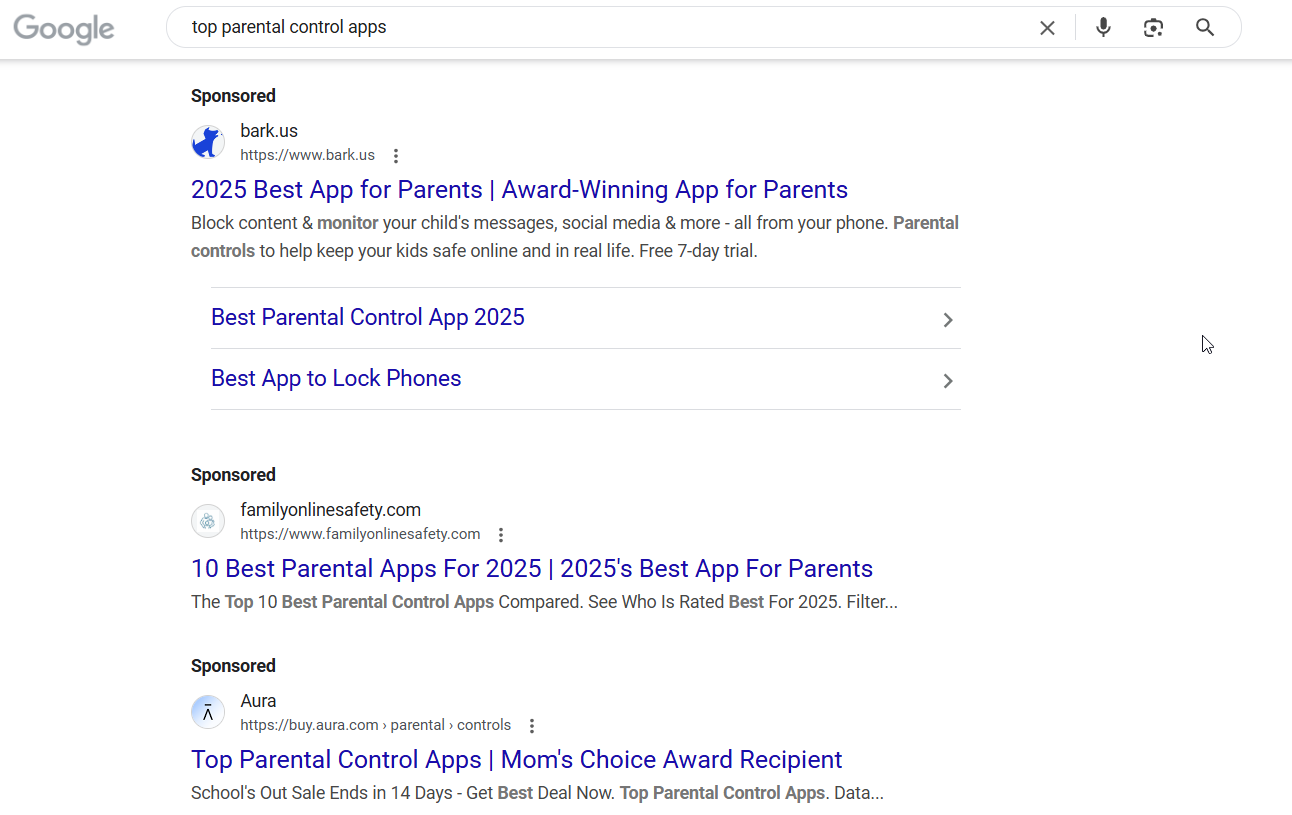 Screenshot from Google search for [top parental control apps], Google, May 2025
Screenshot from Google search for [top parental control apps], Google, May 2025While conducting the same search on Microsoft Bing, the ads look slightly different.
There’s even a section above the sponsored ads showcasing different brands and a brief description about what they do.
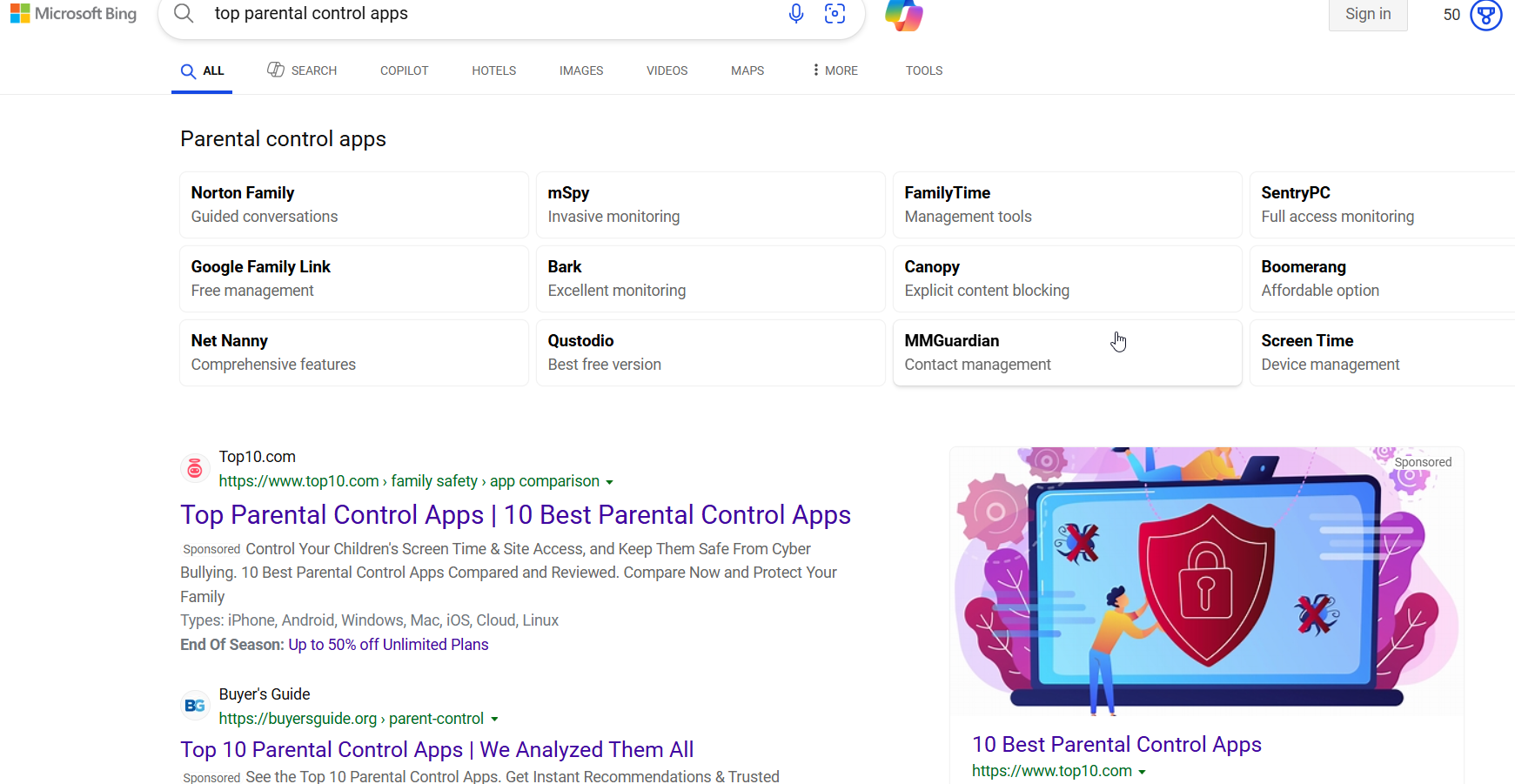 Screenshot from Bing search for [top parental control apps], Microsoft Bing, May 2025
Screenshot from Bing search for [top parental control apps], Microsoft Bing, May 2025When searching for a product like [nike shoes for women], the ads below are a shopping ad format.
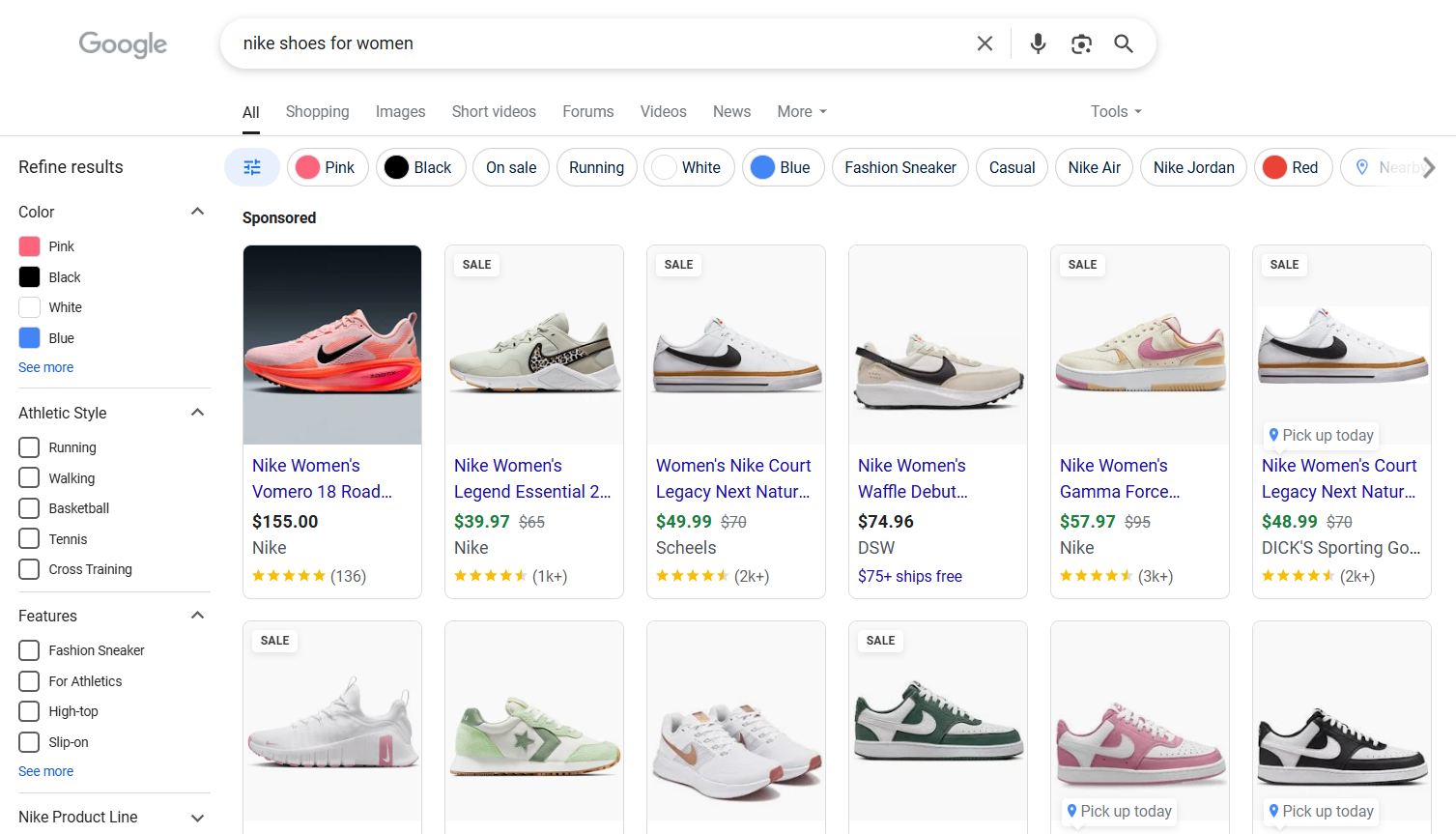 Screenshot from Google search for [nike shoes for women], Google, May 2025
Screenshot from Google search for [nike shoes for women], Google, May 2025Paid Social Examples
Each social platform’s ad formats look different within their respective newsfeeds.
Here is a LinkedIn newsfeed example:
 Screenshot from author’s LinkedIn newsfeed, desktop ad, May 2025
Screenshot from author’s LinkedIn newsfeed, desktop ad, May 2025A Facebook ad newsfeed example:
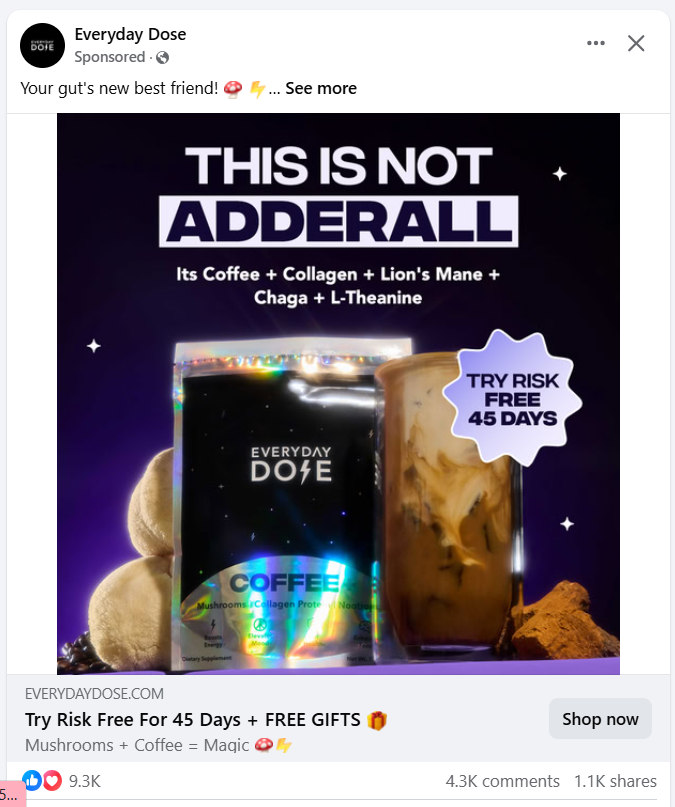 Screenshot from author’s Facebook newsfeed, desktop ad, May 2025
Screenshot from author’s Facebook newsfeed, desktop ad, May 2025Instagram also offers ads in its “Stories” placement. An example from Fountainhead is below:
 Screenshot from author’s Instagram Stories feed, Stories ad, May 2025
Screenshot from author’s Instagram Stories feed, Stories ad, May 2025Display Examples
Display ads can be in all shapes and sizes, depending on the website or app.
Below is an example of two different display ads shown on one webpage.
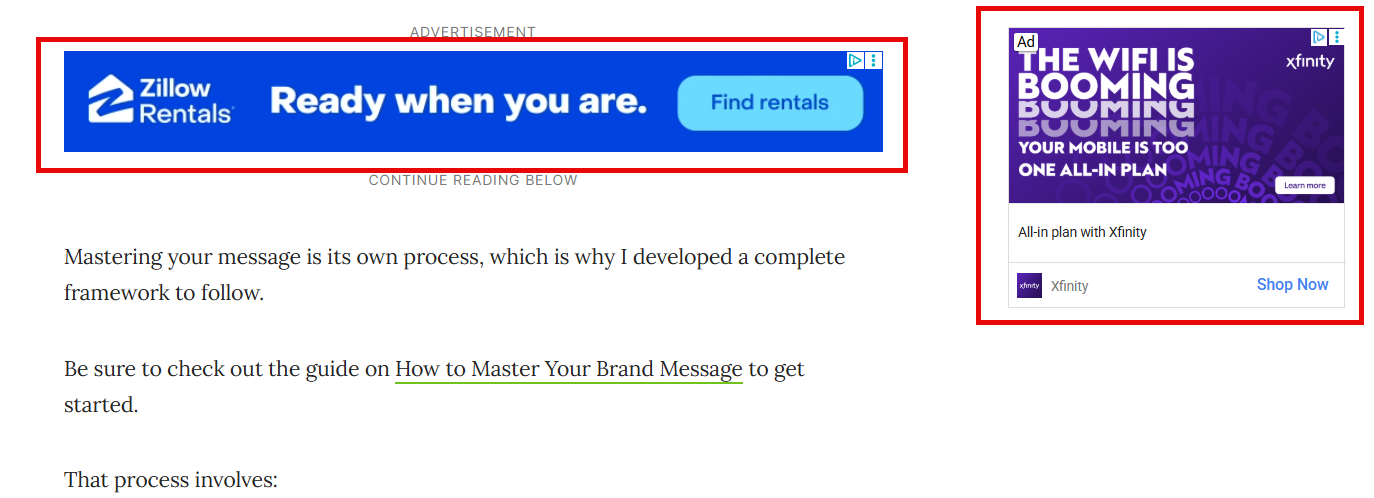 Screenshot from author, May 2025
Screenshot from author, May 2025Affiliate Examples
Sometimes, affiliate ads can be difficult to spot.
For example, “Listicle” articles, where a publisher is paid by other brands to be included in a “Top” product article.
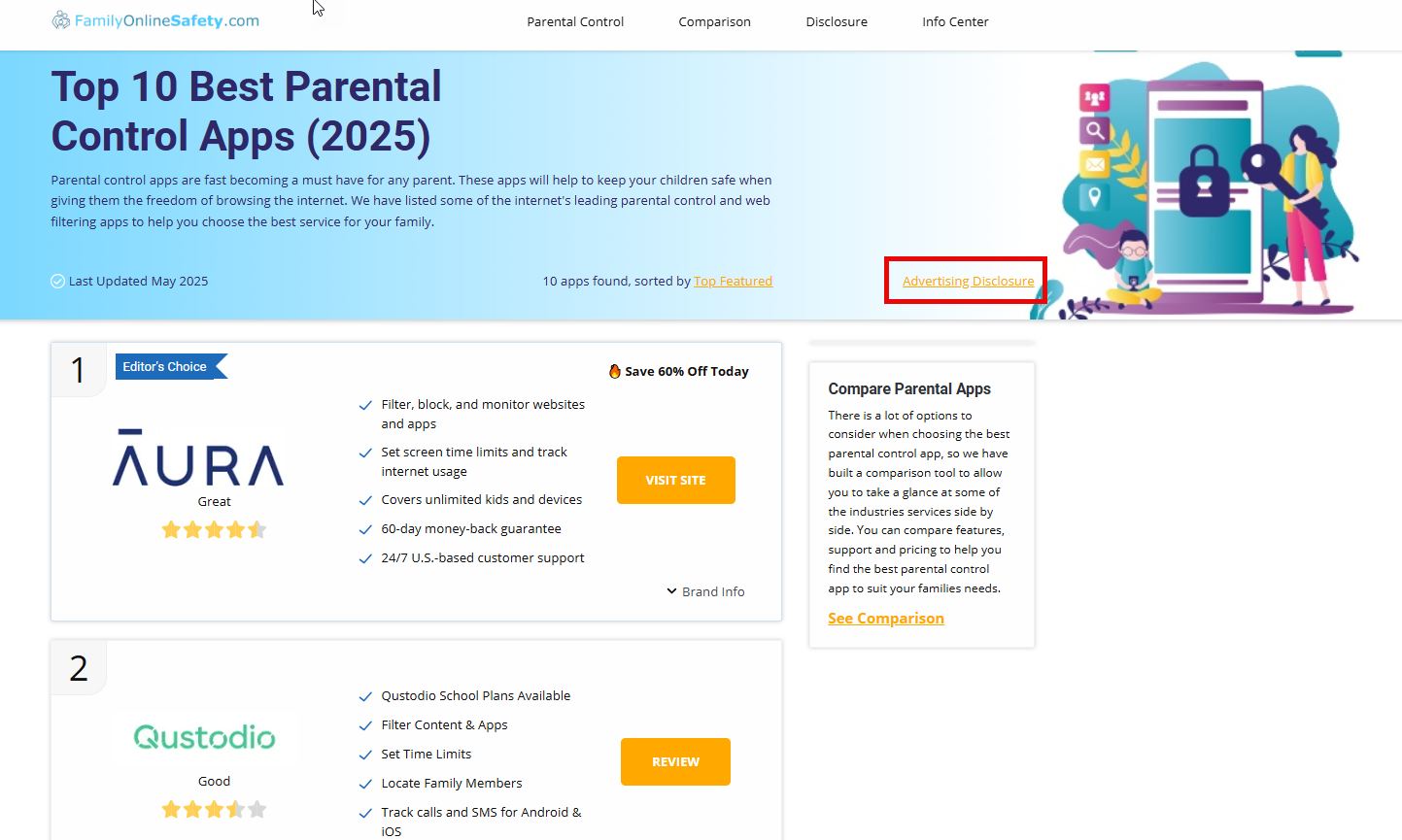 Screenshot from FamilyOnlineSafety.com, May 2025
Screenshot from FamilyOnlineSafety.com, May 2025However, if you take a closer look at this example’s “Advertising Disclosure,” you’ll notice that this publisher is paid by the brands for exclusive placement:
 Screenshot from FamilyOnlineSafety.com, May 2025
Screenshot from FamilyOnlineSafety.com, May 2025Summary
Paid media doesn’t have to be a guessing game. When you understand the role each channel plays, you’re in a much better spot to build campaigns that actually drive results, not just impressions.
From keyword-targeted search ads to affiliate partnerships and social retargeting, each paid media type has its own strengths. Use them deliberately.
Think about where your audience is, how they like to interact, and what action you want them to take.
Remember: success isn’t just about being present on every channel. It’s about showing up with the right message, in the right place, at the right time.
More resources:Â
Featured Image: Lana Sham/Shutterstock
#Paid #Media #Types #Examples

